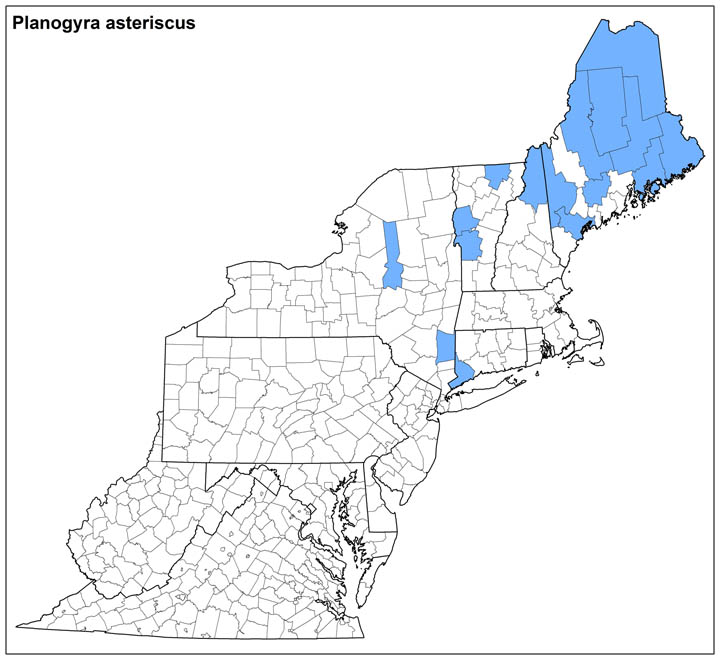Land Snails

Photos: Image not available at this time
Planogyra asteriscus (E.S. Morse, 1857)
Family: Valloniidae
Common name: Eastern Flat-whorl
Identification
Width: 1.8-1.9 mm
Height: 0.9-1.0 mm
Whorls: ~3.5
The depressed heliciform shell of Planogyra asteriscus is noticeable for the tall, widely-spaced, radial laminae that adorn its exterior. These “ribs’ are more pronounced than in its close relatives, the Vallonia species – that is, unless worn down in older specimens or sometimes entirely undeveloped (e.g. Hubricht, 1948). Its shell has a wide umbilicus and a simple, rather round aperture. The animal is nearly transparent.
Ecology
Planogyra asteriscus is found in a variety of wetlands and less frequently, upon rocks features and upland woods (Pilsbry, 1948; Hubricht, 1985; Nekola, 2008). In eastern Maine it is the most abundant species encountered, especially in Northern White Cedar wetlands (Nekola, 2008).
Taxonomy
This species was described from western Maine by famed naturalist E.S. Morse when he was 16 years old (e.g. Martin, 1995). Helix asteriscus, Patula asteriscus, and Pyramidula asteriscus are synonyms (Pilsbry, 1948).
Distribution
Planogyra asteriscusis found in Northeastern and upper Midwestern North America, from New York, Ohio, and Illinois northward.
Conservation
NatureServe Rank: G4, Apparently Secure.
This species is widespread within its core range, though infrequent at the southern edge.
Ken Hotopp 11/2017
Range Map (click to enlarge)



